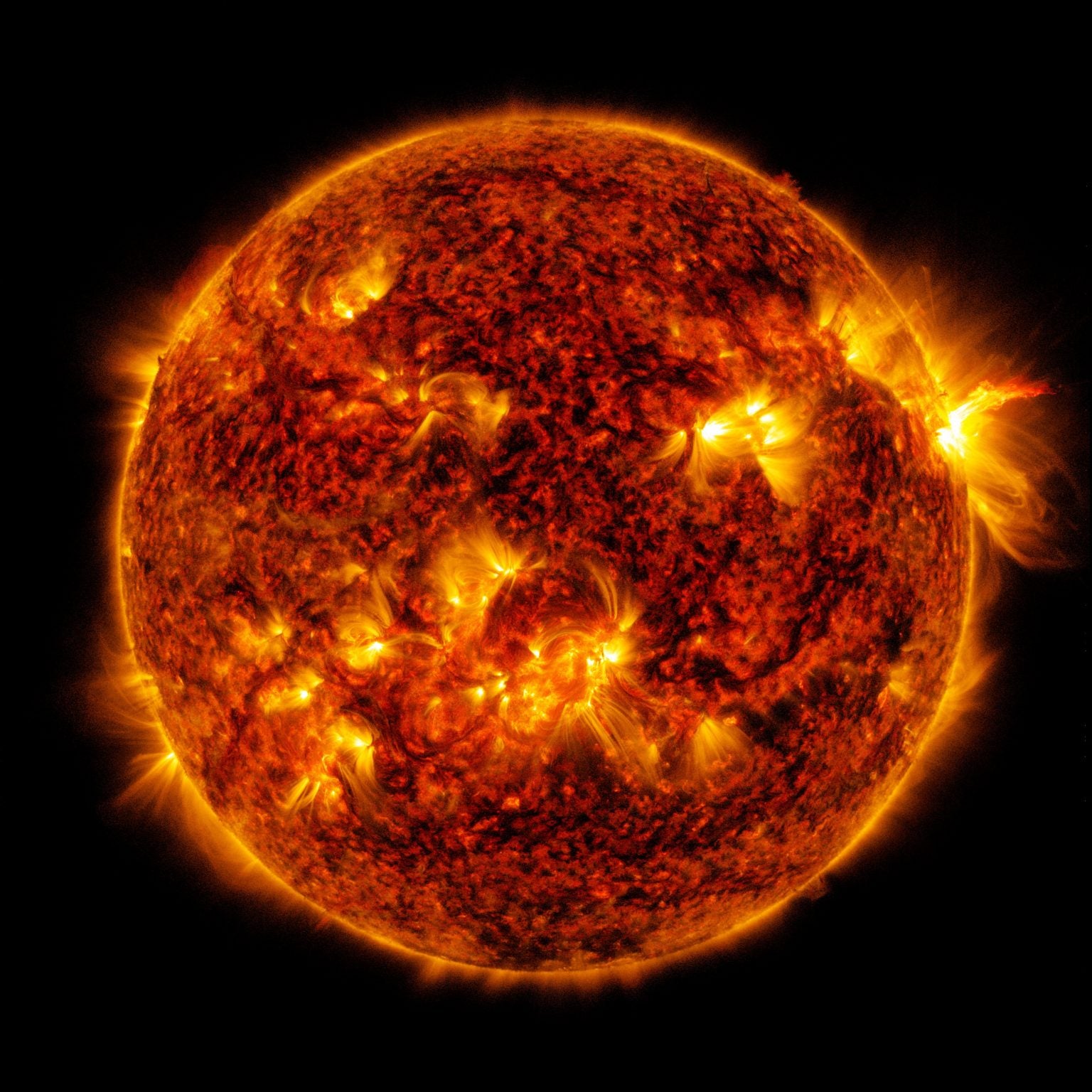Nasa captures image of fourth strong solar flare of the year
The fourth strong solar flare of 2022 is unlikely to cause a geomagnetic storm

Your support helps us to tell the story
From reproductive rights to climate change to Big Tech, The Independent is on the ground when the story is developing. Whether it's investigating the financials of Elon Musk's pro-Trump PAC or producing our latest documentary, 'The A Word', which shines a light on the American women fighting for reproductive rights, we know how important it is to parse out the facts from the messaging.
At such a critical moment in US history, we need reporters on the ground. Your donation allows us to keep sending journalists to speak to both sides of the story.
The Independent is trusted by Americans across the entire political spectrum. And unlike many other quality news outlets, we choose not to lock Americans out of our reporting and analysis with paywalls. We believe quality journalism should be available to everyone, paid for by those who can afford it.
Your support makes all the difference.A strong solar flare has erupted from the Sun, the fourth flare of such similar intensity in 2022, but an associated stream of charged particles discharged by the Sun will likely miss the Earth.
Nasa’s Solar Dynamics Observatory captured an image of the flare as it occurred at 9.47am EDT on Saturday morning.
A solar flare is a powerful burst of radiation released during an eruption on the Sun’s surface that can interfere with radio communications and create problematic fluxes in electric grids, though the National Oceanic and Atmospheric Administration’s Space Weather Prediction Center noted that if Saturday’s flare caused any radio blackouts, it was likely over the Atlantic Ocean.
Solar flares are often accompanied by coronal mass ejections, plumes of charged particles and magnetic fields ejected from the Sun that can cause auroras and geomagnetic storms if they interact with Earth’s magnetic field. According to Noaa however, the coronal mass ejection associated with Saturday’s flare will miss Earth.
Noaa rates solar flare intensity based on the emission of X-rays, and Saturday’s flare was rated an X1.1 flare on is space weather scale, with X-class flares considered “strong” when ranging from X1 to X10, “severe” ranging from X10 to X20, and “extreme for flares any stronger than that. The strongest solar flare recorded was an X28 flare observed in 2003.
Saturday’s was the third most powerful solar flare observed so far in 2022, Nasa observed an X2.2 flare on 19 April, an X1.3 flare on 30 March, and another X1.1 flare was measured on 17 April. The X2.2 flare was the strongest was flare observed since 2017.
The frequency and intensity of solar flares are likely to increase over the next few years as the Sun heads towards its magnetic activity maximum, the peak of a roughly 11-year cycle in solar eruptions.
While many solar flares and coronal mass ejections cause few problems, they can create hazards for space operations. On 4 February, a geomagnetic storm caused by a coronal mass ejection swelled Earth’s upper atmosphere and dragged 40 newly launched SpaceX satellites out of orbit.
Join our commenting forum
Join thought-provoking conversations, follow other Independent readers and see their replies
Comments